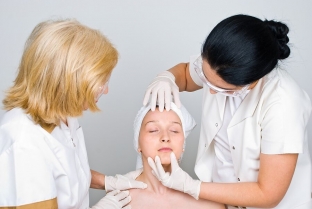Many manipulations in a beauty salon bring patients not only aesthetic satisfaction from the result, but also quite strong pain during the procedure. Since no one likes to endure pain, despite the commonly used expression about the sacrifices necessary in the name of beauty, many patients try to alleviate the discomfort of skin resurfacing or injections before the procedure by taking painkillers or applying ointments or sprays to the skin with a similar effect. What you need to warn the patient, who is afraid of pain, before the procedure, reminds estet-portal.com.
What will definitely not help with pain before the procedure
Most often, before visiting a beautician, patients go to a pharmacy and buy "something painkiller"; - as a rule, one of the non-steroidal anti-inflammatory drugs sold without prescriptions. Tablets are swallowed, although sometimes they even manage to grind and spread on the skin. What does this mean for the patient:
- pain can reduce – if you manage to randomly guess the class of the drug that can act as an anesthetic for this particular procedure, although it will not save you from the pain of a needle prick anyway;
- can cause allergies both on its own and in combination with the means used by the doctor during the procedure.
Lidocaine gels and sprays, which experienced patients of cosmetic clinics try to use, also have their drawbacks:
- during the procedure, the doctor will hit with a needle at the point where the skin has not been sufficiently treated with an anesthetic, and it will hurt all the same;
- if a gel or spray, including a dental one, contains, in addition to lidocaine, also menthol, then if its particles accidentally get on the mucous membranes or eyes, lacrimation or an allergy will develop.
Of course, you should not use typical "folk" funds in the form of strong alcoholic drinks, since in this case the visit to the clinic will end right at the reception desk.

What kind of pain relief can the patient expect before the procedure
Application anesthesia. It is carried out by applying to the skin a special gel containing 5% lidocaine or more. The method is moderately effective, but does not guarantee pain relief. The fact is that pain receptors are located in the layers of the skin quite individually – one patient is closer to the surface, the other – deeper.
Since the molecules of the anesthetic gel cannot penetrate deep into the skin, then the pain relief with its help may occur partially, in some areas of the skin, or not at all.
Conduction anesthesia. If an anesthetic is administered subcutaneously to the patient before the injection procedure, then there is a risk of it reacting with the injected cosmetic preparation. The result of such a chemical reaction can be either the neutralization of a cosmetic preparation, or local inflammation with unpleasant complications.
When performing a thread lift, you can try to inject a local anesthetic away from the area of intervention. This method of anesthesia before the procedure is quite justified.
Another option for anesthesia – blockade of the branches of the trigeminal nerve, which enters the face in three symmetrical pairs: at the inner edges of the eyebrows, under the eye sockets and on the chin. This type of anesthesia is acceptable under the following conditions:
- the procedure is performed by a certified doctor who has undergone special training in this technique;
- doctor has an anti-shock kit on hand, as accidental intravascular injection of anesthetic can cause anaphylactic shock.
After a trigeminal nerve block, the patient's sensation will disappear for a few hours and then return. Before the procedure, it is imperative to ask the patient if he suffers from a trigeminal nerve disease.
The most demanding patients want to undergo cosmetic procedures under general anesthesia. This is perfectly acceptable, but the patient should know:
- general anesthesia is possible only in a medical clinic licensed in the field of "anesthesiology and resuscitation", equipped with intensive care equipment and a special resuscitation ward for postoperative monitoring, staffed by appropriate specialists;
- before the procedure with general anesthesia, you will have to undergo a complete medical examination in accordance with the requirements of the intensive care physician.







Add a comment